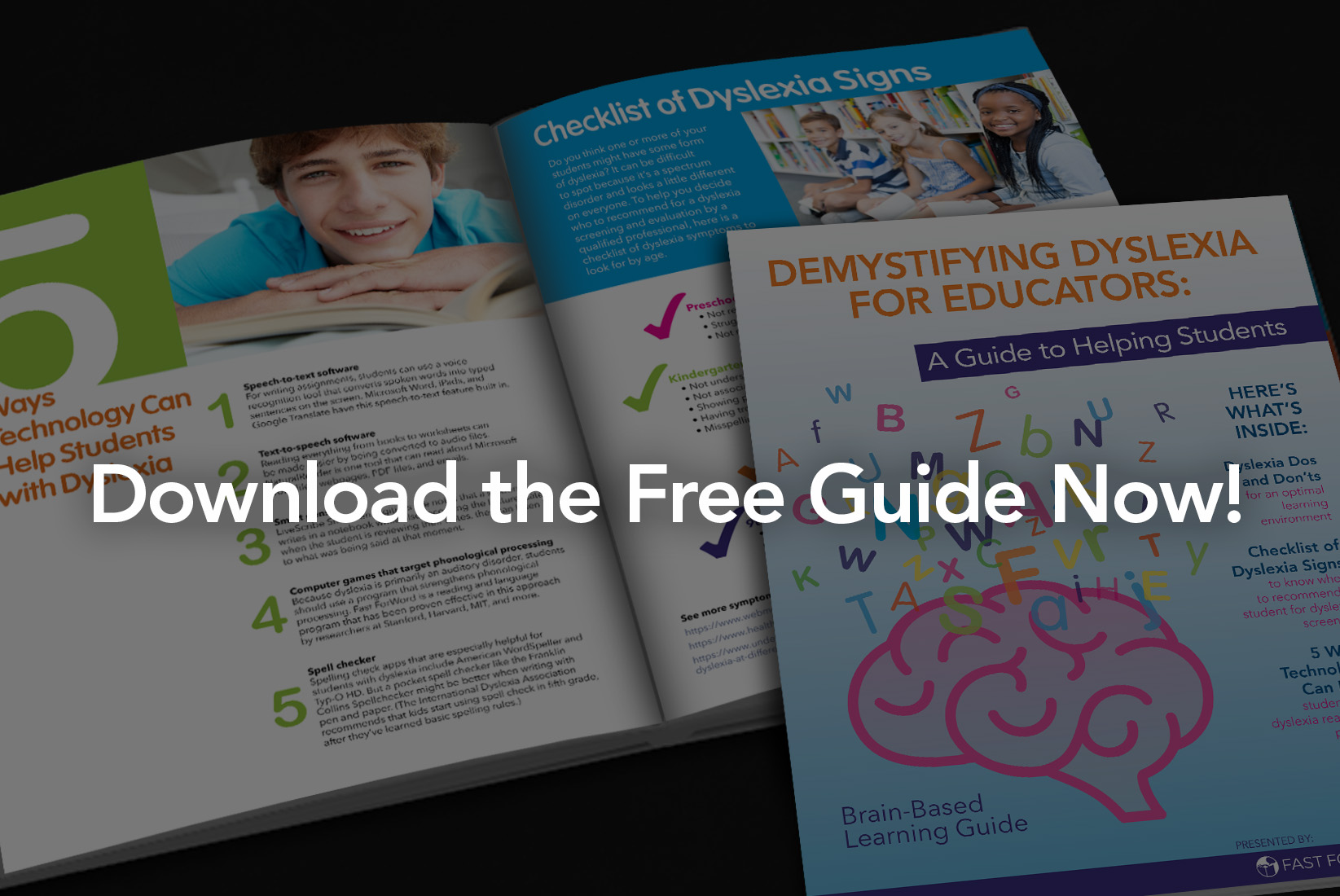
When I taught writing, I had hard-working students who articulated great ideas in class discussions and didn’t seem to have any learning issues. And then they’d submit papers that were riddled with simple spelling errors or were even downright incomprehensible. Sometimes the essays demonstrated surprisingly low levels of reading comprehension.
“What’s going on?” I’d wonder, give feedback, and move on. While puzzled, I figured there wasn’t much more for me to do than help them improve one paper at a time.
What I wish I knew then was that these students might have had dyslexia. And if you’re a teacher, you’ve had students with dyslexia too. No, really, you probably have—even if you didn’t know it.
One out of five people have dyslexia, and many go undiagnosed until adulthood, if ever. Out of students with learning disabilities, 80-90% of them have dyslexia, making it the most common learning disability that often accompanies other conditions like ADHD and apraxia.
Some of your students or children might already be diagnosed and have IEPs to accommodate their learning differences. But many others with dyslexia might be hiding in plain sight.
I spoke to Marlene M. Lewis, M.A., a registered speech-language pathologist, who works with children with dyslexia, among other learning disorders. She shared what she wishes everyone—educators, parents, and students—knew about dyslexia. These are the 4 things she said.
1. “Do not wait till grades 2 or 3 or later to see how a student progresses. Dyslexia should be treated as soon as a teacher or parent sees a student not picking up phonological awareness skills, which is typically noticed already in early grade 1.”
Waiting to offer targeted support to learners until they begin failing at reading in 2nd or 3rd grade is called the “wait-to-fail” approach, and research has found that this common practice is detrimental to students. Learn more here.
2. “Dyslexia and struggling reading, in the absence of other known factors that would account for it, are the same thing. A diagnosis of dyslexia isn't necessarily needed to start treating struggling reading.”
In the ongoing “dyslexia debate,” sparked by the 2014 book The Dyslexia Debate, experts have argued why dyslexia should or should not be differentiated from general reading impairment. At the end of the day, it doesn’t matter how the diagnosis is worded: struggling readers should not be left to struggle alone. And we should give them the benefit of the doubt that their challenges may be neurological, like dyslexia is, rather than a lack of motivation or effort.
3. “Dyslexia isn't specifically about reversing letters or numbers.”
A common myth is that dyslexia is a vision problem that prevents readers from seeing text correctly on the page. The scientific consensus is that it is primarily an auditory disorder that involves difficulty in processing rapid sounds. Read more here.
4. “Dyslexia doesn't need to be a life-long condition. It can be ended early for many more students than is currently happening—we have the neuroscience and the technology to do that.”
Although dyslexia is incurable, its symptoms can be dramatically remediated with the use of reading interventions and special instructional support that are based on the best neuroscience research. Fast ForWord is a neuroscience-based reading and language software program that has been proven effective at helping learners with dyslexia achieve their full potential. Learn how here.
Conclusion
Now that you know what I wish I had known as a teacher, what changes will you make at your school, home, or clinic? Will you begin treating dyslexia-like symptoms earlier than 2nd or 3rd grade? If you work with older students, will you treat any struggling reading as if it could be neurologically based like dyslexia, rather than behaviorally based, even if the student has not been diagnosed?
While teachers and parents should rely on trained professionals to diagnose dyslexia, it is important to know what dyslexia is and isn’t for when we work with any struggling reader. Most importantly, let’s remember that no matter the age, it’s not too late for anyone to overcome dyslexia symptoms. With the right tools, every learner can be a strong reader.
Thank you to Marlene M. Lewis, M.A., for her contributions to this blog post. Marlene is a certified provider of Fast ForWord at ACCESS Speech-Language Services in Victoria, BC, Canada. Visit her resource-rich website at https://www.end-dyslexia.com.
Related Blog Posts:
2019 Update on Dyslexia Research
Too Many Kids with Dyslexia are Left Behind: Here’s Why
#SayDyslexia
Risks of Not Identifying Dyslexia
Understanding Dyslexia: 5 Ways to End the Homework Struggle
5 Myths about Dyslexia
How do ADD, Dyslexia, and Auditory Processing Disorder Overlap?
 Have you read the Dyslexia Guide from our Brain-Based Learning Guide series?
Have you read the Dyslexia Guide from our Brain-Based Learning Guide series?
Here’s what’s inside:
- Dyslexia Dos and Don’ts
- Checklist of Dyslexia Symptoms
- 5 Ways Technology Can Help
Download it here.


Add new comment